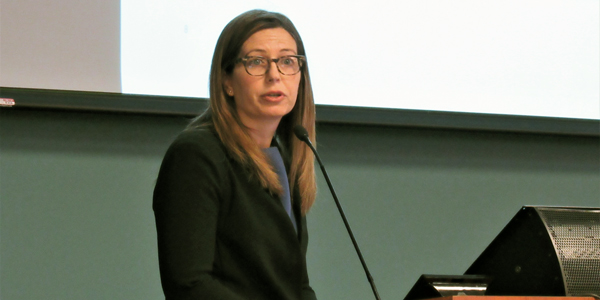By Amanda Durish Cook
CARMEL, Ind. — Stakeholders last week said they foresee MISO making multiple changes to its markets to accommodate storage in response to FERC Order 841.
MISO invited stakeholders to give presentations on storage integration under the order during a May 10 Market Subcommittee meeting. The RTO will explore how to best comply with the order during a more comprehensive meeting scheduled for June 6, a joint effort of its Reliability, Market and Resource Adequacy subcommittees.
NextEra Energy’s Holly Carias, also representing the Energy Storage Association, said MISO’s participation model should not exclude any type of resource that meets the definition of storage.
“I think it’s not simply enough to fit storage into the traditional generator definition,” she said.
Instead, Carias said, storage resources should be able to self-bid instead of being subjected to must-offer obligations, in order to prevent battery life from being cut short by unpredictable injections. She also said MISO might need to update rules on physical withholding given storage’s operational nature.
But Minnesota Public Utilities Commission staff member Hwikwon Ham cautioned that allowing storage resources too much flexibility in the market could open MISO up to attempts to game the system.
The RTO’s market platform replacement comes at an opportune time then, Carias said, as it will be able to handle how storage will change energy use.
“In 10 years, battery storage is going to be so cheap that it will disrupt how we use energy,” Carias said, adding that by 2025, storage prices are estimated to fall to about $100/kWh.
MISO Executive Director of Market Operations Jeff Bladen reminded stakeholders that Order 841 simply requires RTOs to open their markets to storage participation and does not mandate any market design changes, although MISO will nevertheless debate to facilitate storage additions.
“To be clear, our view at MISO is that we want to evolve our markets. The pathway to changing our markets is not Order 841 compliance; it’s our own Market Roadmap [improvements]. … I want to make sure we don’t lose sight of that,” Bladen said.
Vistra Energy’s Mark Volpe asked how MISO’s views on storage assets interconnected at the distribution level — and not currently subject to the RTO’s control — might evolve in light of Order 841.
“The question of FERC-jurisdictional assets is not one that we’re going to get into,” Bladen responded firmly.
He added that MISO would carefully dispatch any generation assets for which the RTO is granted operational control.
“We need to be to very confident that we’re not going to cause any harm or mayhem at the distribution level. We essentially have a Hippocratic Oath that we’re not going to do any harm at the distribution level,” Bladen said.
Customized Energy Solutions’ David Sapper said storage could inject energy to relieve the heightened, late-day loss-of-load risk hours predicted by a recent MISO study on increased renewable resource integration. (See MISO Renewable Study Predicts Later Peak, Narrower LOLE Risk.)
“Storage could address those few hours that are becoming so worrisome,” Sapper said.
Nick Griffin of DTE Energy, which co-owns the Ludington Pumped Storage Plant in western Michigan, urged MISO not to leave pumped storage behind when considering Order 841.
“We certainly think pumped storage is part of the solution, and there might be additional flexibility to leverage to benefit MISO as well as MISO customers,” Griffin said.
Concepts like state-of-charge and charge times can easily translate into reservoir levels and pumping times, he said.
Xcel Energy’s Kari Clark, representing MISO’s transmission owners, said the RTO should study the possible impacts of storage on the transmission system.
Clark also said existing metering capabilities do not distinguish charging from delivery, and distribution utilities and RTOs should work together to update metering processes. TOs “don’t feel that the metering is quite there,” she said.
Storage in the Capacity Auction
Meanwhile, MISO could see its first energy storage resource offer into the Planning Resource Auction next year.
Storage resources can currently qualify as planning resources by qualifying as either emergency-only behind-the-meter generation or as the RTO’s new Stored Energy Resource Type II (SER Type II) category type. (See FERC OKs MISO Plan to Expand Storage.)
MISO Executive Director of Strategy Shawn McFarlane said that, as of mid-May, one market participant is going through the process of registering its storage as SER Type II. He urged other market participants thinking of registering a SER Type II to contact their MISO representative.





